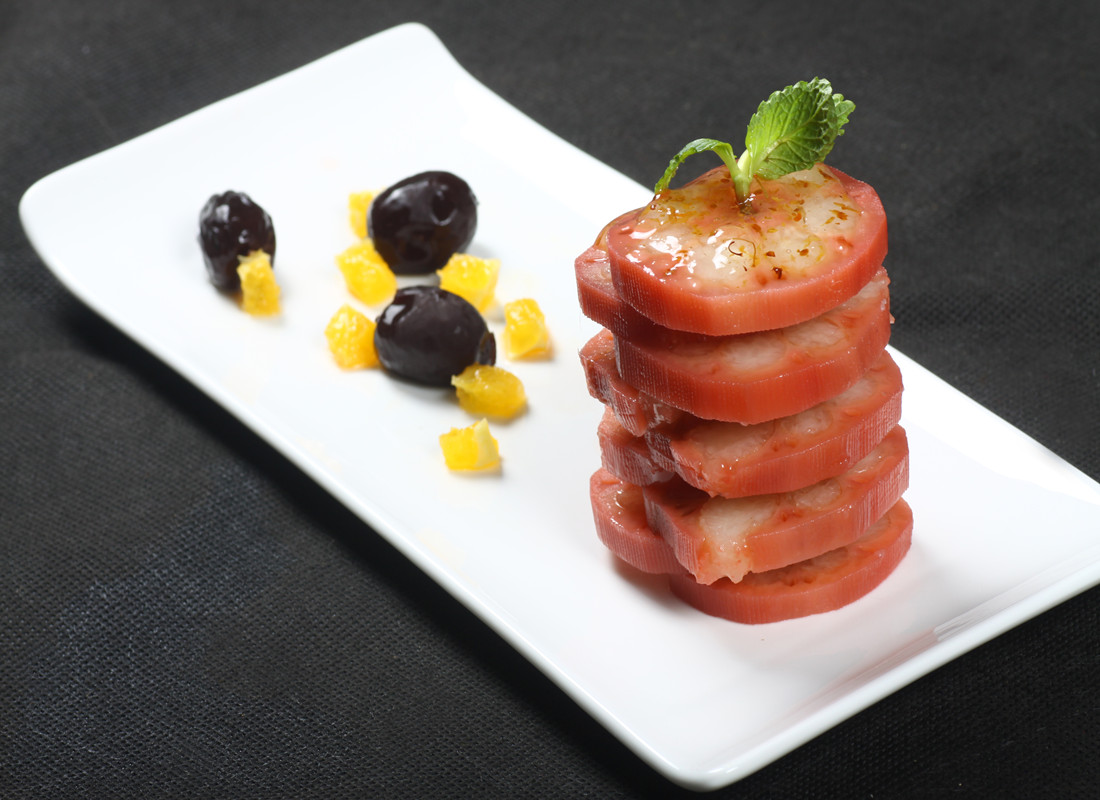Editor's Note:
The 2016 G20 summit will be held in Hangzhou, East China’s Zhejiang Province on September 4-5. Zhejiang cuisine is well known for being one of the Eight Culinary Traditions of China. As the capital city of Zhejiang and the former capital of the Southern Song Dynasty (1127-1279), see which delicacies Hangzhou has in store to welcome guests to the 2016 G20 summit.
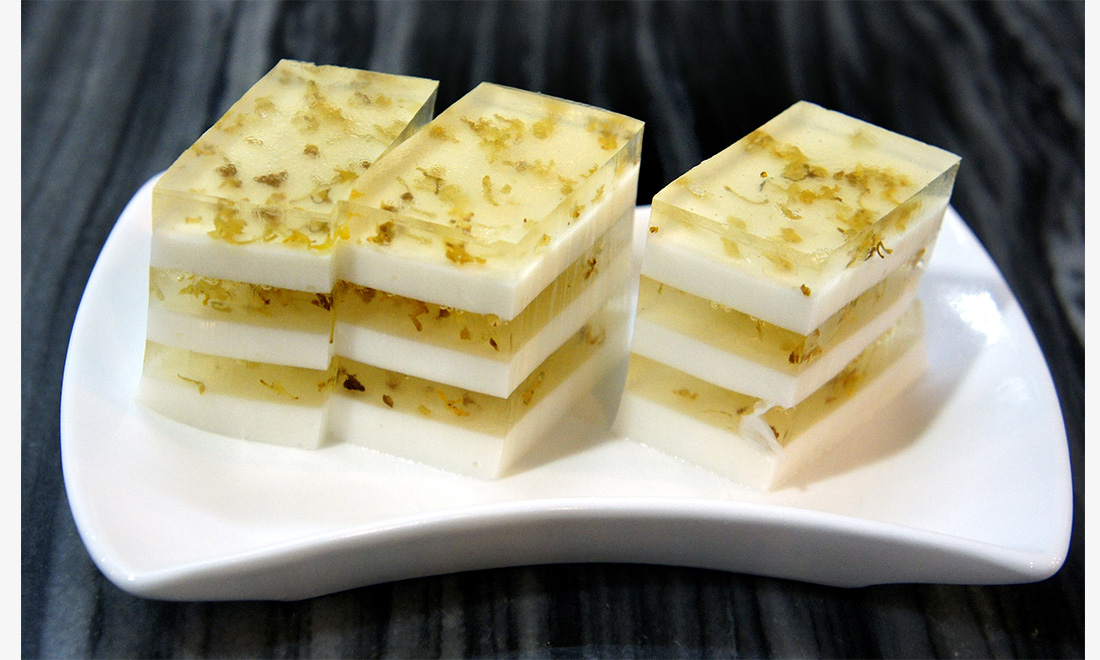 Osmanthus jelly has been a popular dessert for over 300 years. The jelly is primarily made from white sugar, glutinous rice flour and honey osmanthus. It not only has a crystal clear appearance, but also offers a sweet and refreshing taste. Photo: CFP
Osmanthus jelly has been a popular dessert for over 300 years. The jelly is primarily made from white sugar, glutinous rice flour and honey osmanthus. It not only has a crystal clear appearance, but also offers a sweet and refreshing taste. Photo: CFP 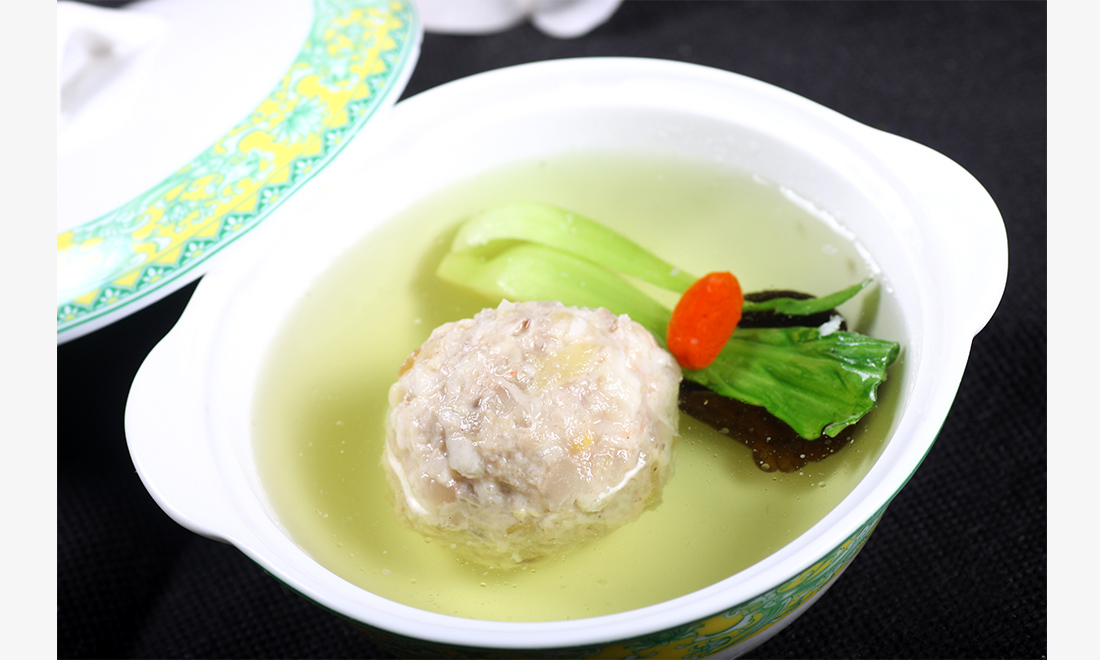 Lion’s head, or braised pork meatballs, is both delicious and nutritious. It can be prepared in two ways: either white (plain) or red (cooked with soy sauce). The shape of the meatballs is said to resemble the head of a lion, with the vegetable garnish, usually bok choy, having the appearance of a lion's mane. Photo: CFP
Lion’s head, or braised pork meatballs, is both delicious and nutritious. It can be prepared in two ways: either white (plain) or red (cooked with soy sauce). The shape of the meatballs is said to resemble the head of a lion, with the vegetable garnish, usually bok choy, having the appearance of a lion's mane. Photo: CFP 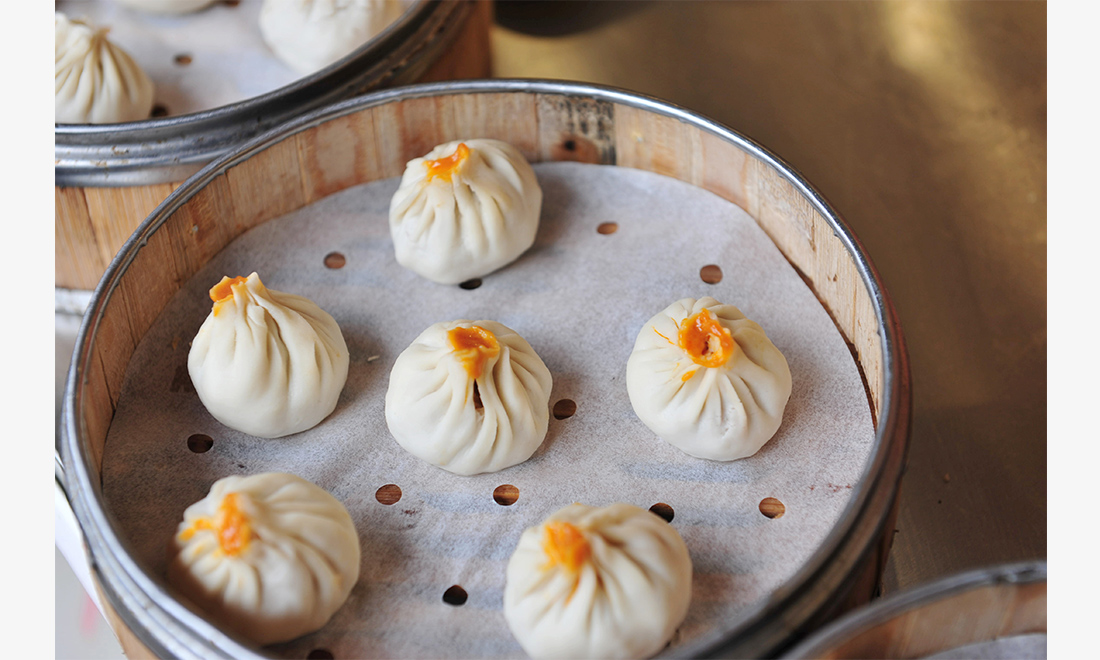 Crab roe xiaolongbao, or steamed buns with crab roe, are popular in Zhejiang, Jiangsu, Shanghai and Hong Kong, and can be found too throughout Southeast Asia. Using crab roe instead of the traditional pork filling gives the steamed buns a unique seafood flavor. Photo: IC
Crab roe xiaolongbao, or steamed buns with crab roe, are popular in Zhejiang, Jiangsu, Shanghai and Hong Kong, and can be found too throughout Southeast Asia. Using crab roe instead of the traditional pork filling gives the steamed buns a unique seafood flavor. Photo: IC 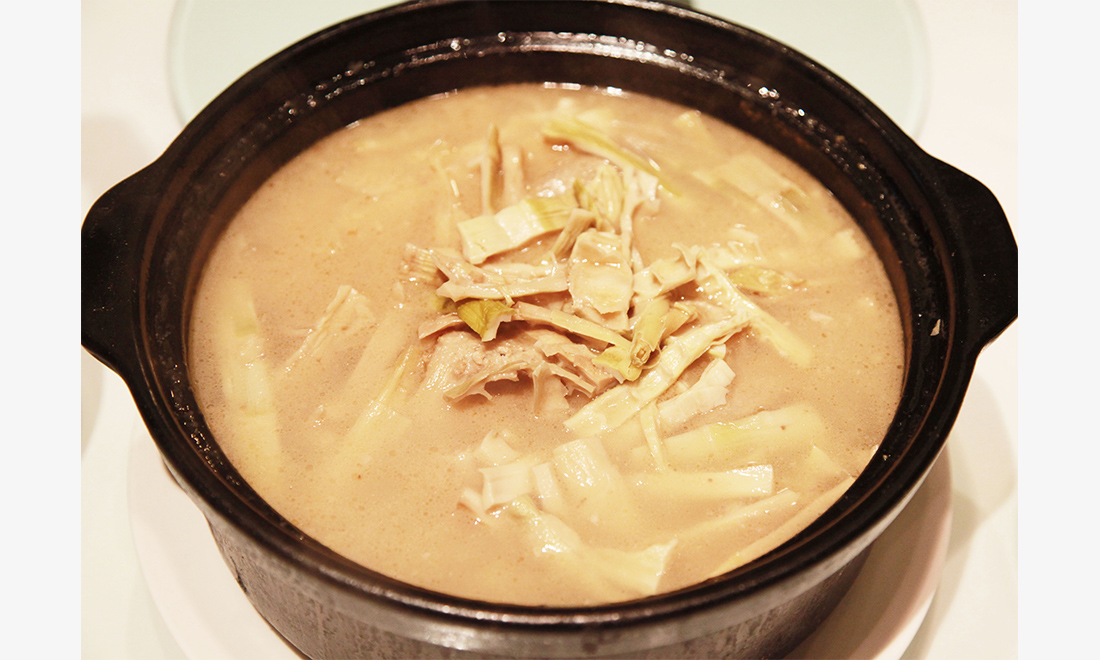 Duck soup with dried bamboo shoots and ham is prepared by boiling the mixture for several hours. Shaoxing wine is also added to the soup to achieve its distinctive flavor. Photo: CFP
Duck soup with dried bamboo shoots and ham is prepared by boiling the mixture for several hours. Shaoxing wine is also added to the soup to achieve its distinctive flavor. Photo: CFP 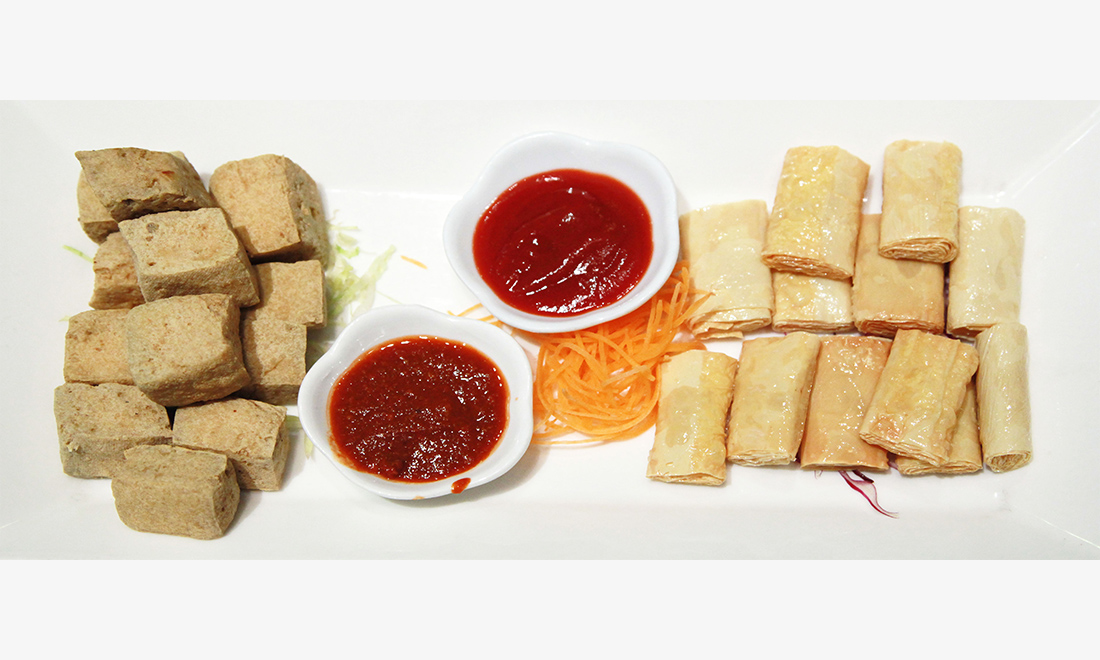 Fried stuffed bean curd paste is bright in color, crisp and dainty. As thin as onion skin, the bean curd takes on a crispy texture, and is fried to achieve the ideal tenderness. Photo: CFP
Fried stuffed bean curd paste is bright in color, crisp and dainty. As thin as onion skin, the bean curd takes on a crispy texture, and is fried to achieve the ideal tenderness. Photo: CFP
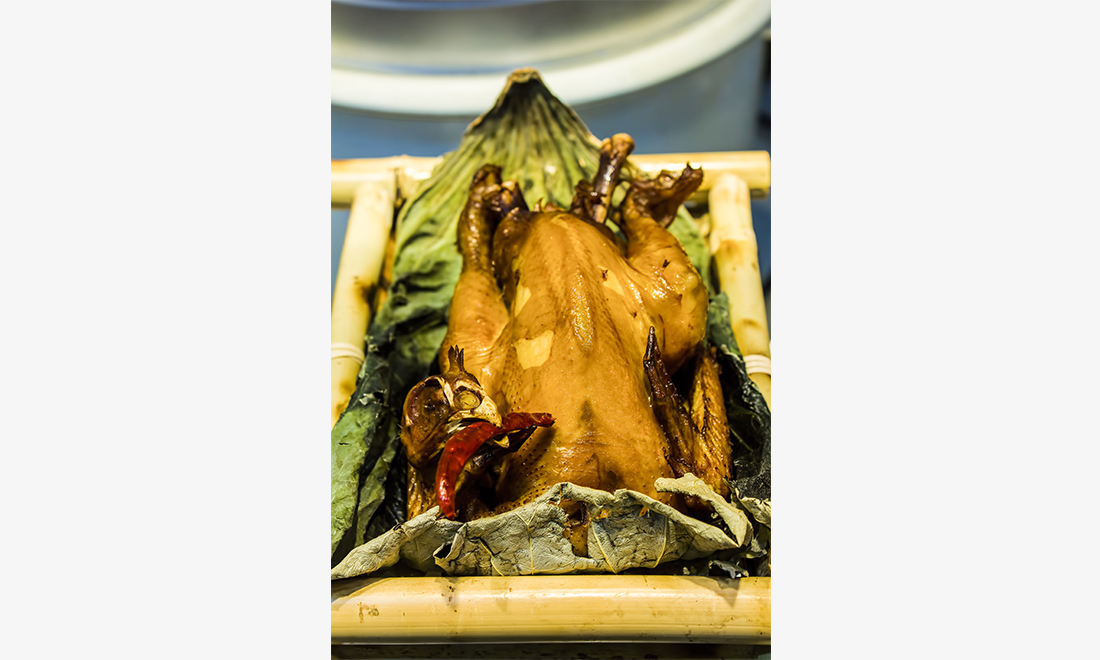 Beggar’s chicken, or stuffed roast chicken wrapped in lotus leaves, gets its name from a folktale. Back in the Qing dynasty (1644-1911), a hungry beggar was caught stealing a chicken, and was chased by its rightful owner. In order to hide his loot, the beggar wrapped the chicken with lotus leaves, and buried it in the mud before running away. The beggar later returned and roasted the muddy package directly over his fire. When he unwrapped the leaves, he discovered a delicious tender chicken hidden within. Photo: IC
Beggar’s chicken, or stuffed roast chicken wrapped in lotus leaves, gets its name from a folktale. Back in the Qing dynasty (1644-1911), a hungry beggar was caught stealing a chicken, and was chased by its rightful owner. In order to hide his loot, the beggar wrapped the chicken with lotus leaves, and buried it in the mud before running away. The beggar later returned and roasted the muddy package directly over his fire. When he unwrapped the leaves, he discovered a delicious tender chicken hidden within. Photo: IC
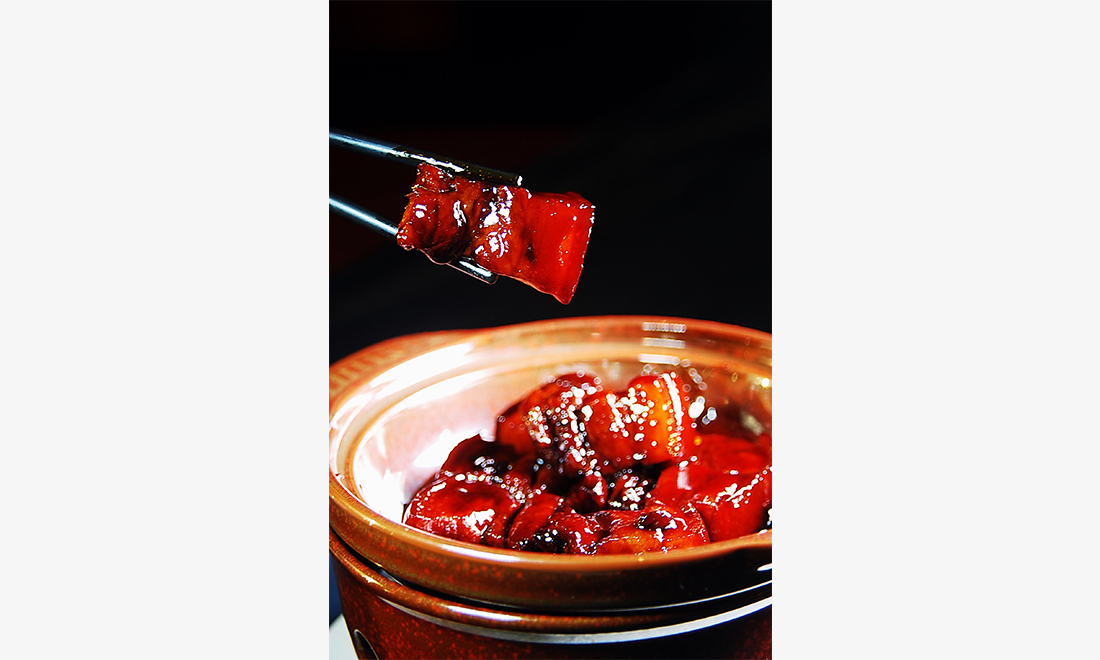 Dongpo pork, or Dongpo braised pork, is a traditional Zhejiang dish named after the famous poet and gastronome Su Dongpo of the Song Dynasty (960-1279). The pork is cut into 2-inch squares of both fat and lean meat with the skin left on. After pan-frying and red cooking (cooking with soy sauce), the dish takes on an oily appearance but is free from any greasy taste. Photo: CFP
Dongpo pork, or Dongpo braised pork, is a traditional Zhejiang dish named after the famous poet and gastronome Su Dongpo of the Song Dynasty (960-1279). The pork is cut into 2-inch squares of both fat and lean meat with the skin left on. After pan-frying and red cooking (cooking with soy sauce), the dish takes on an oily appearance but is free from any greasy taste. Photo: CFP 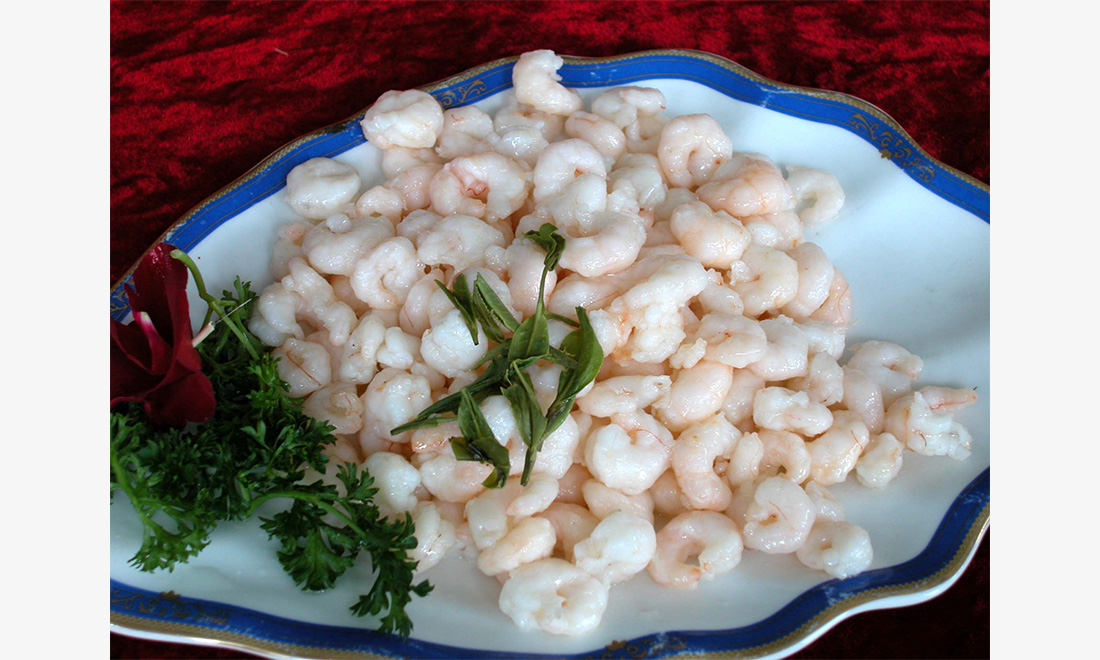 Longjing prawns, or stir-fried shrimp with Dragon Well tea, is a dish with distinctive Hangzhou features. Longjing tea, literally translated as Dragon Well tea, was once granted the status of Gong Cha, or imperial tea, for the Emperors of the Qing Dynasty (1644-1911). The combination of Longjing tea shoots and fresh prawns makes the dish a unique tasty treat. Photo: IC
Longjing prawns, or stir-fried shrimp with Dragon Well tea, is a dish with distinctive Hangzhou features. Longjing tea, literally translated as Dragon Well tea, was once granted the status of Gong Cha, or imperial tea, for the Emperors of the Qing Dynasty (1644-1911). The combination of Longjing tea shoots and fresh prawns makes the dish a unique tasty treat. Photo: IC 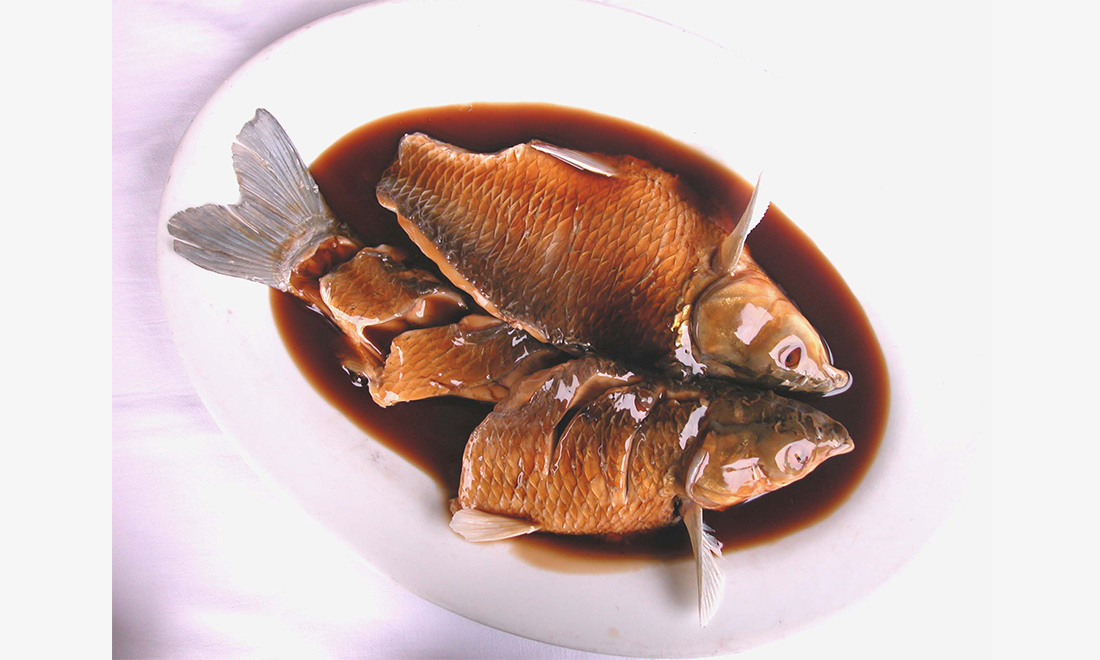 West Lake vinegar fish, one of the most popular Hangzhou dishes, is a grass carp cooked with vinegar and sweet sauce. Photo: IC
West Lake vinegar fish, one of the most popular Hangzhou dishes, is a grass carp cooked with vinegar and sweet sauce. Photo: IC









